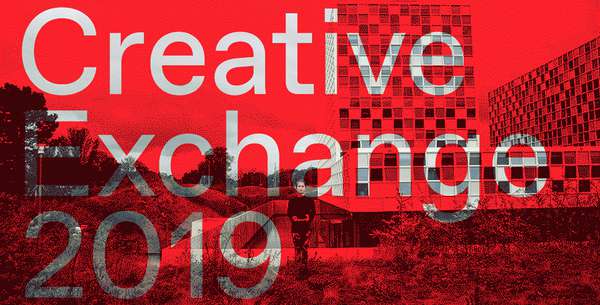Idea by
para-sight
Call for ideas 2019
Visual Mediations
Visual Mediations
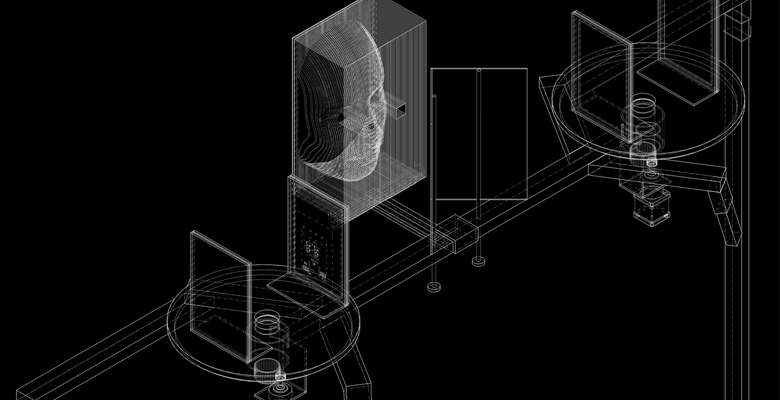
- New alliances
The way we see is no longer a straightforward experience but instead, our sight is constantly mediated through feedback loops, playbacks, multiple channels, interfaces, and synchronizations of disparate space-time continuums. As these non-human visual machines infiltrate our vision, our eyes are becoming bodies without demarcated boundaries. This expanding range of mediated visualities escapes the power of control as previously asserted through architectural means of representation, e.g. perspective. In the multi-media installation entitled 'Doubled Vision' I aim to investigate how self and self-image are split in space and time. The image of the participant's body is re-produced for the viewer who re-constructs it stereoscopically. Within the installation space one sees oneself from the viewpoint of another. This moment unhinges the body image from the self. Today, architecture and its modes of representation need to be significantly rethought in relation to this mediated visuality.

The photographs from left to right: 1. view of participant upon entering the installation space through the black curtains, 2. view of the installation space from the entrance facing the frosted glass at the far end of the corridor, 3. view facing mirrored floor during light simulation, 4. cavity placed on frosted glass pane, contains opening for peeping towards the screens on the inverse side of the corridor, 5. concealed DSLR cameras placed on reverse side of corridor.

These stereoscopic images have been captured by the concealed DSLR cameras that are capped with a custom-made lens. This lens produces a stereoscopic pair of images. The camera is triggered via ultrasonic sensors that communicate with the cameras via software. Once the image is captured it is then further processed, i.e. split into two a sent to the two LCD screens that are placed behind the frosted glass pane.
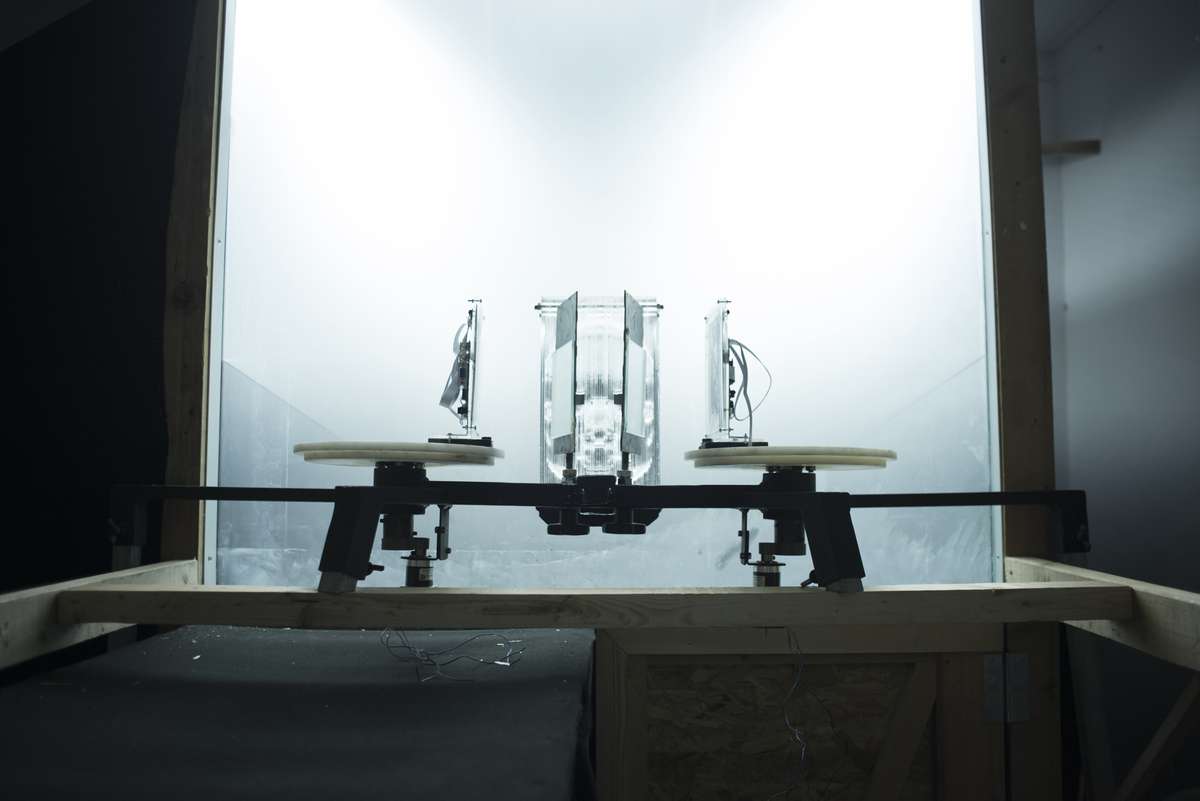
Behind the frosted glass pane is the digital stereoscopic machine. This device contains micro-controllers, micro-computers, gears and LCD screens. The screens receive the processed images that were previously captured and through the setup (mirror arrangements) re-produced an image in-depth of the viewer in 'real' time.
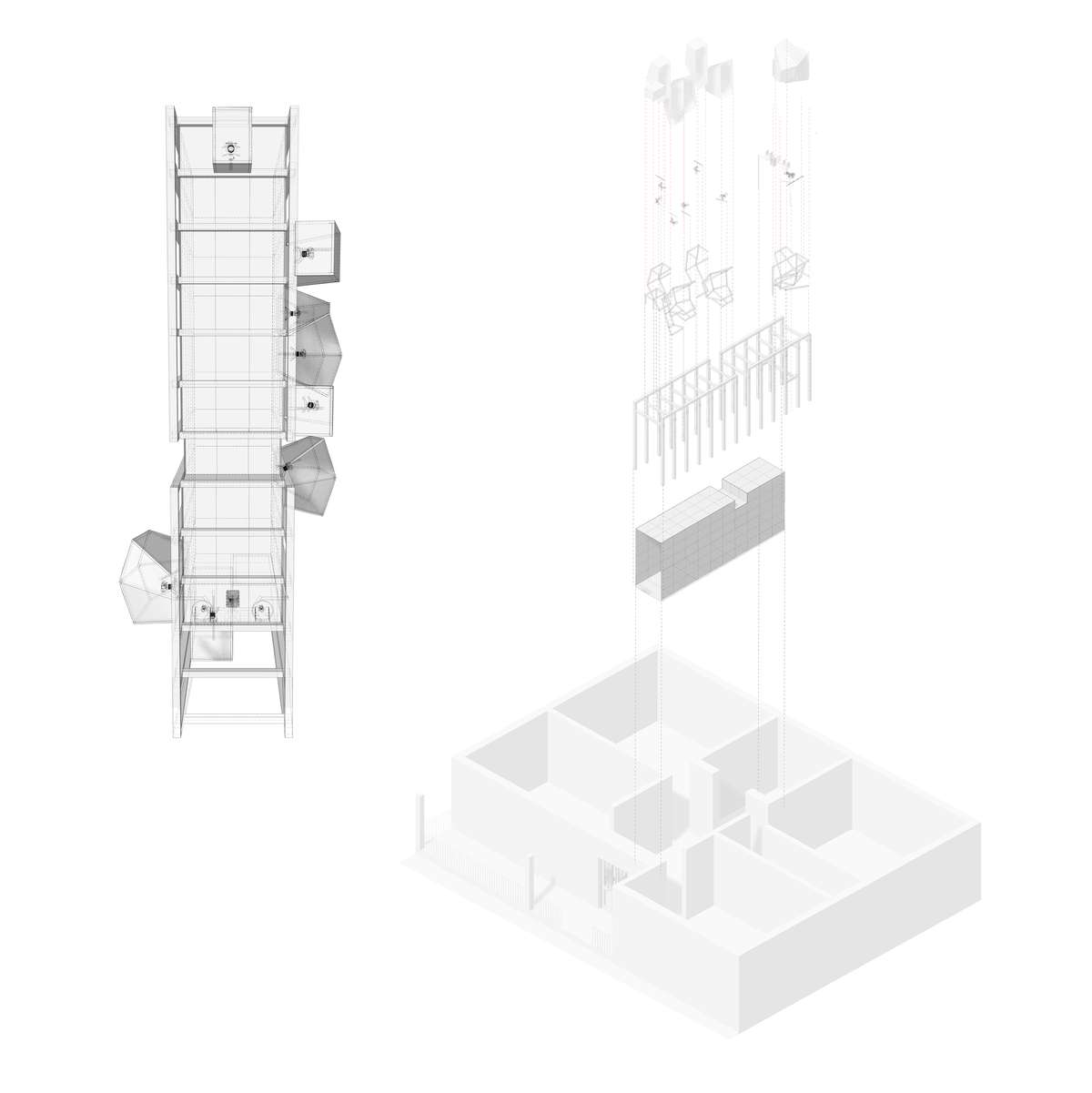
The drawing on the left represents the installation as seen from above, marking all the positions of the cameras within the actual space. The exploded axonometric on the right shows how the timber frame installation slots inside the abandoned house. The original layout of the house becomes subverted as the mirrored corridor takes over two rooms creating a virtual slice through the traditional residential unit.

These drawings further explore the actual space of the installation. The timber frame construction holds up the mirror panels internally. Externally the frame supports custom made timber sub-frames that contain the cameras, these units are all encased and covered with blacked-out felt. Essentially the inside of the corridor communicates with these outer volumes through the two way mirrors. The light ratios on either side have to be carefully calibrated for the image capturing to work.
Visual Mediations
Visual Mediations

- New alliances
The way we see is no longer a straightforward experience but instead, our sight is constantly mediated through feedback loops, playbacks, multiple channels, interfaces, and synchronizations of disparate space-time continuums. As these non-human visual machines infiltrate our vision, our eyes are becoming bodies without demarcated boundaries. This expanding range of mediated visualities escapes the power of control as previously asserted through architectural means of representation, e.g. perspective. In the multi-media installation entitled 'Doubled Vision' I aim to investigate how self and self-image are split in space and time. The image of the participant's body is re-produced for the viewer who re-constructs it stereoscopically. Within the installation space one sees oneself from the viewpoint of another. This moment unhinges the body image from the self. Today, architecture and its modes of representation need to be significantly rethought in relation to this mediated visuality.

The photographs from left to right: 1. view of participant upon entering the installation space through the black curtains, 2. view of the installation space from the entrance facing the frosted glass at the far end of the corridor, 3. view facing mirrored floor during light simulation, 4. cavity placed on frosted glass pane, contains opening for peeping towards the screens on the inverse side of the corridor, 5. concealed DSLR cameras placed on reverse side of corridor.

These stereoscopic images have been captured by the concealed DSLR cameras that are capped with a custom-made lens. This lens produces a stereoscopic pair of images. The camera is triggered via ultrasonic sensors that communicate with the cameras via software. Once the image is captured it is then further processed, i.e. split into two a sent to the two LCD screens that are placed behind the frosted glass pane.
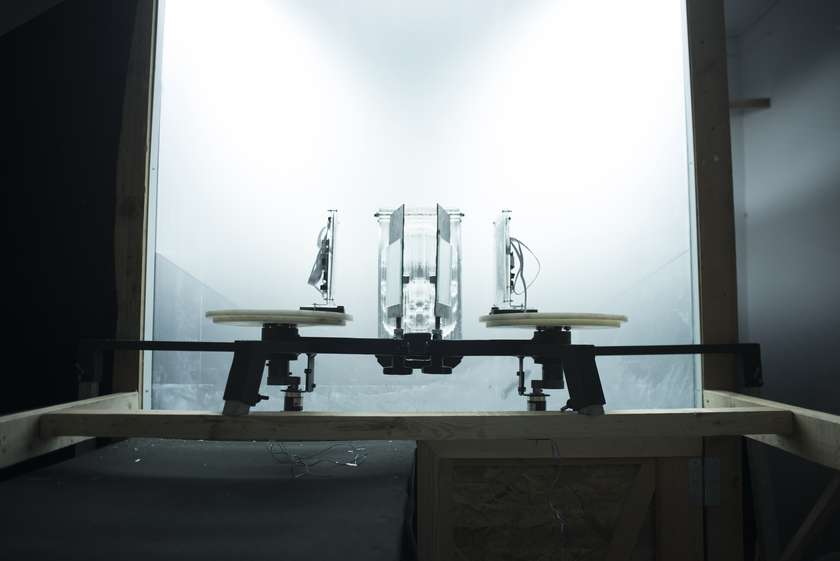
Behind the frosted glass pane is the digital stereoscopic machine. This device contains micro-controllers, micro-computers, gears and LCD screens. The screens receive the processed images that were previously captured and through the setup (mirror arrangements) re-produced an image in-depth of the viewer in 'real' time.
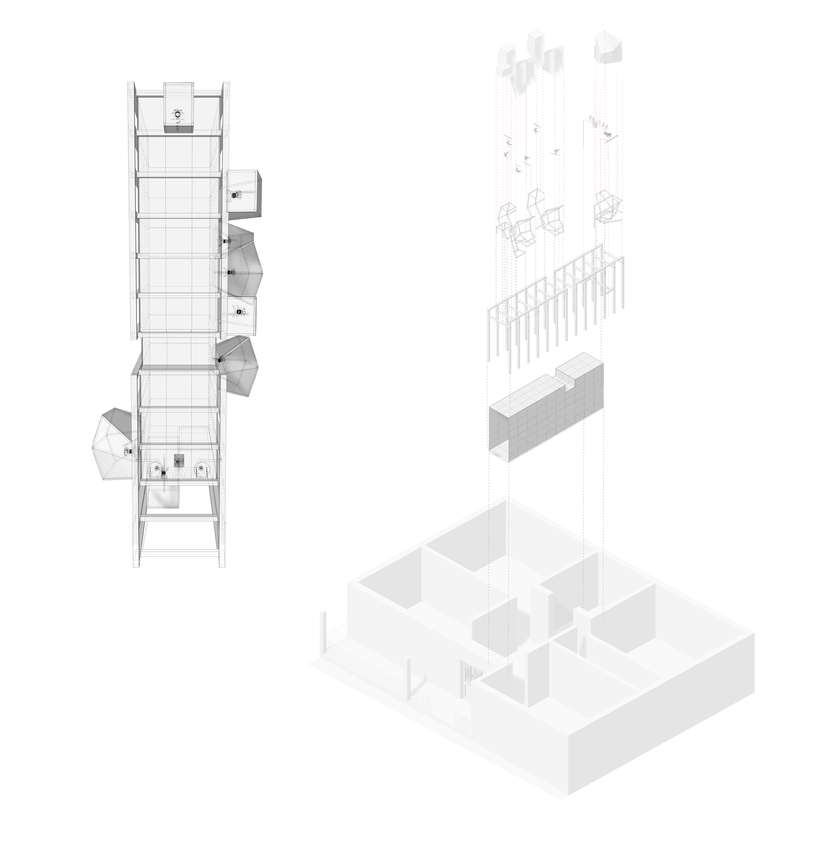
The drawing on the left represents the installation as seen from above, marking all the positions of the cameras within the actual space. The exploded axonometric on the right shows how the timber frame installation slots inside the abandoned house. The original layout of the house becomes subverted as the mirrored corridor takes over two rooms creating a virtual slice through the traditional residential unit.

These drawings further explore the actual space of the installation. The timber frame construction holds up the mirror panels internally. Externally the frame supports custom made timber sub-frames that contain the cameras, these units are all encased and covered with blacked-out felt. Essentially the inside of the corridor communicates with these outer volumes through the two way mirrors. The light ratios on either side have to be carefully calibrated for the image capturing to work.
